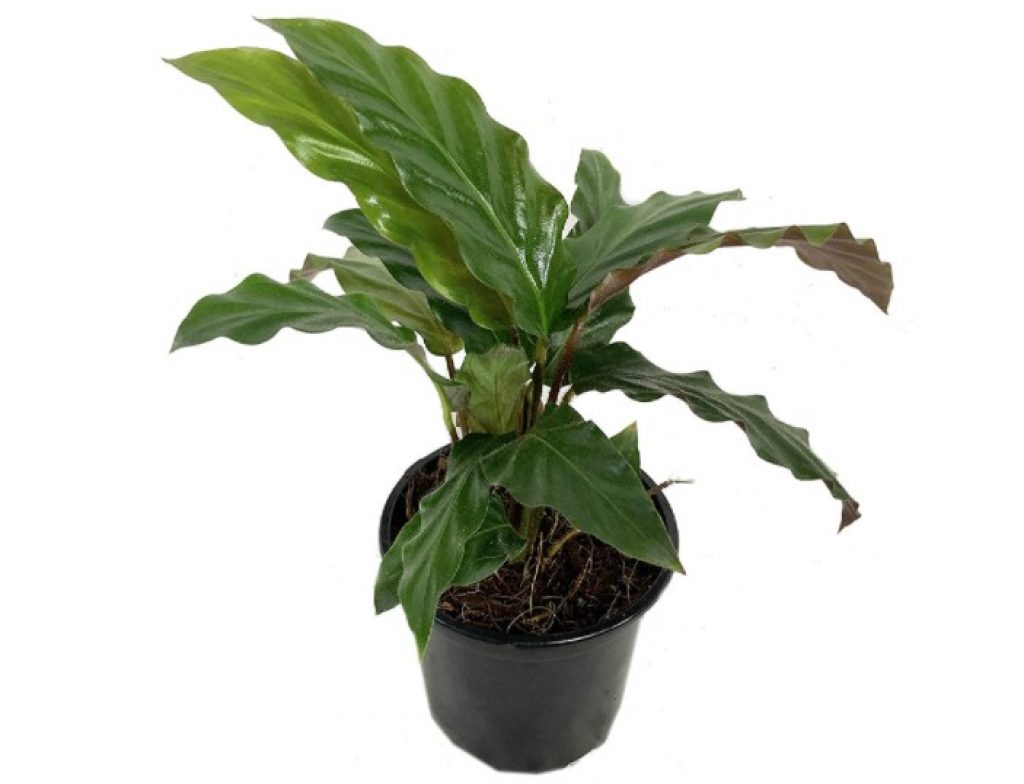Calathea rufibarba, commonly known as velvet calathea or furry feather, is a flowering plant in the arrowroot family, otherwise known as prayer-plants. The fur-like fuzzy texture on their stem and wavy leaves gives this houseplant a velvety feel, hence the name.
When compared to other calatheas, C. Rufibarba is a tall variety. Its long blue-green leaves, red stems, and dark maroon underside make them lovely houseplants to have in your bedroom or bathroom.

Since Calathea Rufibarba isn’t toxic to cats or dogs, it is a perfect choice for people with these pets. The other species and cultivars of calatheas like peacock plant, rattlesnake plant, medallions, Freddie, Calathea ornata, C. warscewiczii, etc., are also safe for your cat.
Growing
Before you go ahead and buy these calatheas, we would like to give you a few tips for growing them. You shouldn’t just buy an ornamental because they are safe if you don’t intend to grow and care for them properly. Some of the requirements that these lovely pot houseplants require include:
- Light: They require indirect light, just like in the case of their natural habitat, which has a tall tree offering them shade. Excessive sunlight will burn their leaves and won’t let them have the most vibrant of colors.
- Temperature: Being tropical plants, they thrive well in a warm temperature of 15-26 °C, with 18.23°C, ideal.
- Watering – They need moist soil but not too wet as it will cause root rot. Therefore, ensure you have well-drained soil. Ensure don’t overwater them.
- Humidity – These calatheas need high humidity, making them good in your bathroom or kitchen. You can also
- Fertilizer – They don’t need much fertilizing. However, using your standard houseplant fertilizer during fall, spring, summers, or when they are growing or flowering. A nitrogen-rich one will boost their foliage appearance.
- Pruning – You don’t need to prune them. Just remove any brown leaves as they will make the plant less attractive.
As you can see, they have several requirements making them not the easiest of houseplants to have, especially humidity.
Besides calatheas, other cat-safe ornamental plants you may like include the following:
- Christmas cactus
- Echeveria glauca
- Boston fern
- aluminum plant
- Bromeliad
- Haworthia Zebra
- Money tree
- Friendship plant
- Peperomia ginny
- True palms like majesty, parlor, areca, and so on.
While you may want to have the coolest looking house, there are plants you must avoid or protect if you have cats. While strict carnivores, cats may graze on greeneries from time to time.
Therefore, protect or avoid any houseplants that are dangerous to your cat, such as the peace lilies, aloe vera, pothos, jade plants, sago palms, snake plants, English ivy, Dumbcane, Amaryllis, Begonias, chrysanthemum, daffodils, dahlias, among many others.
